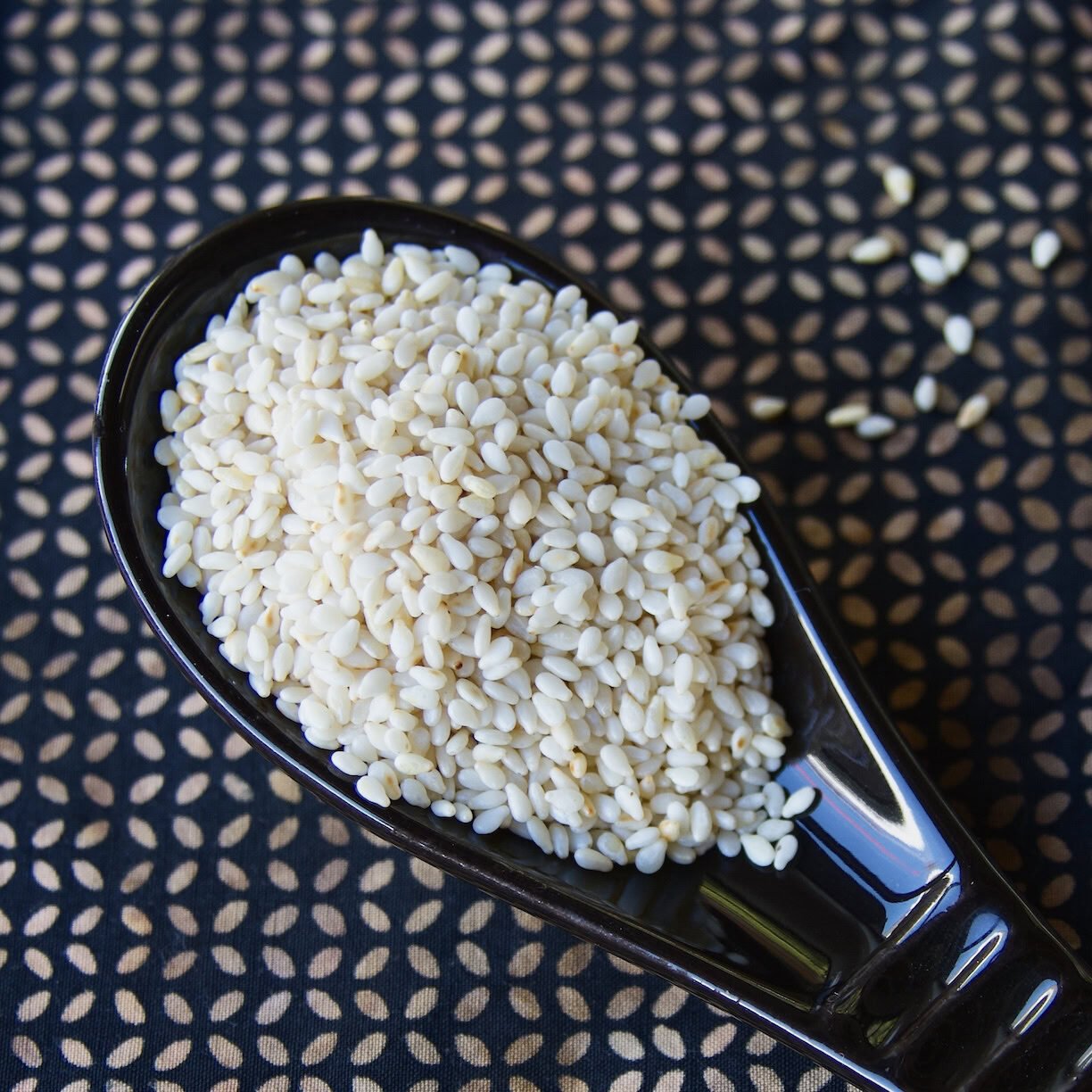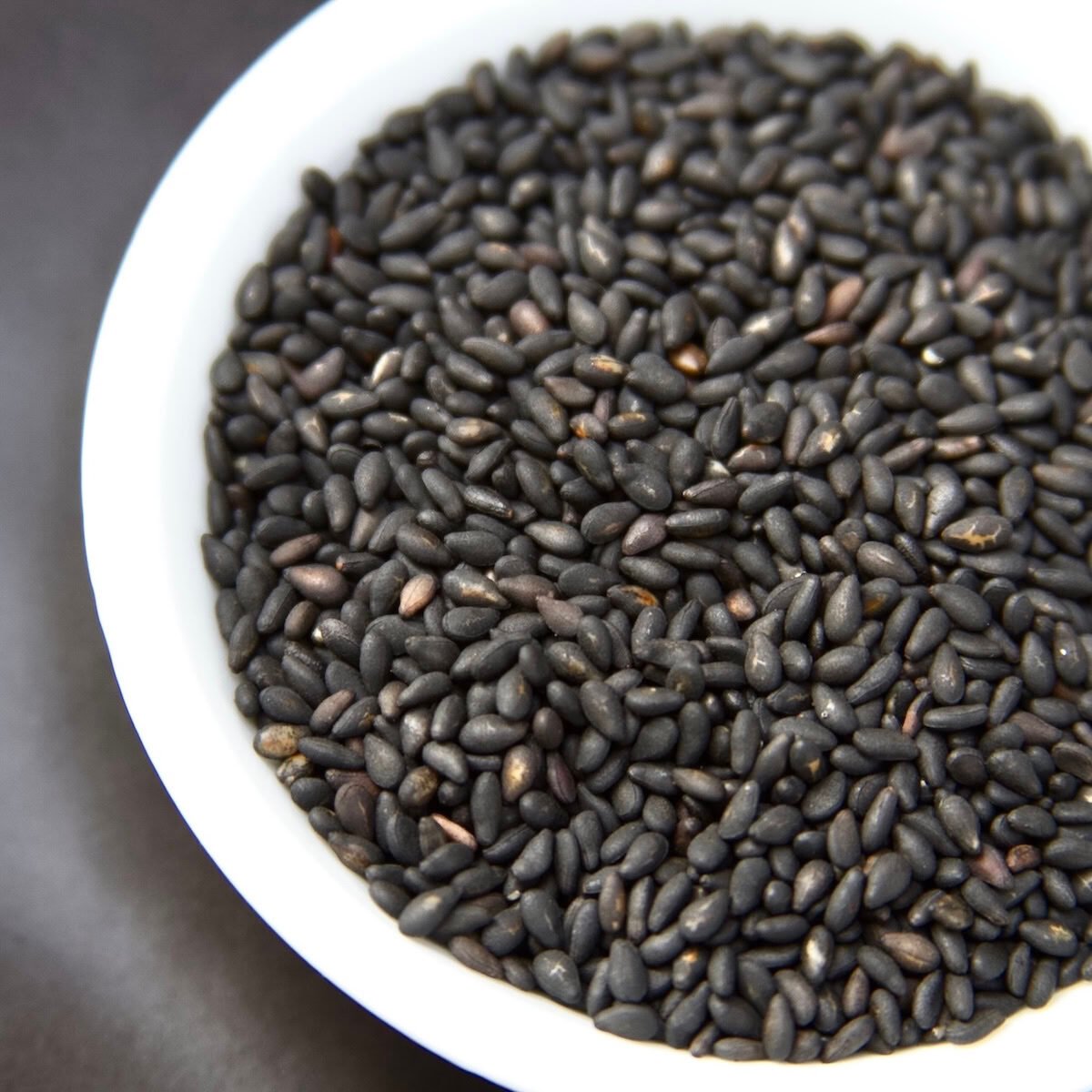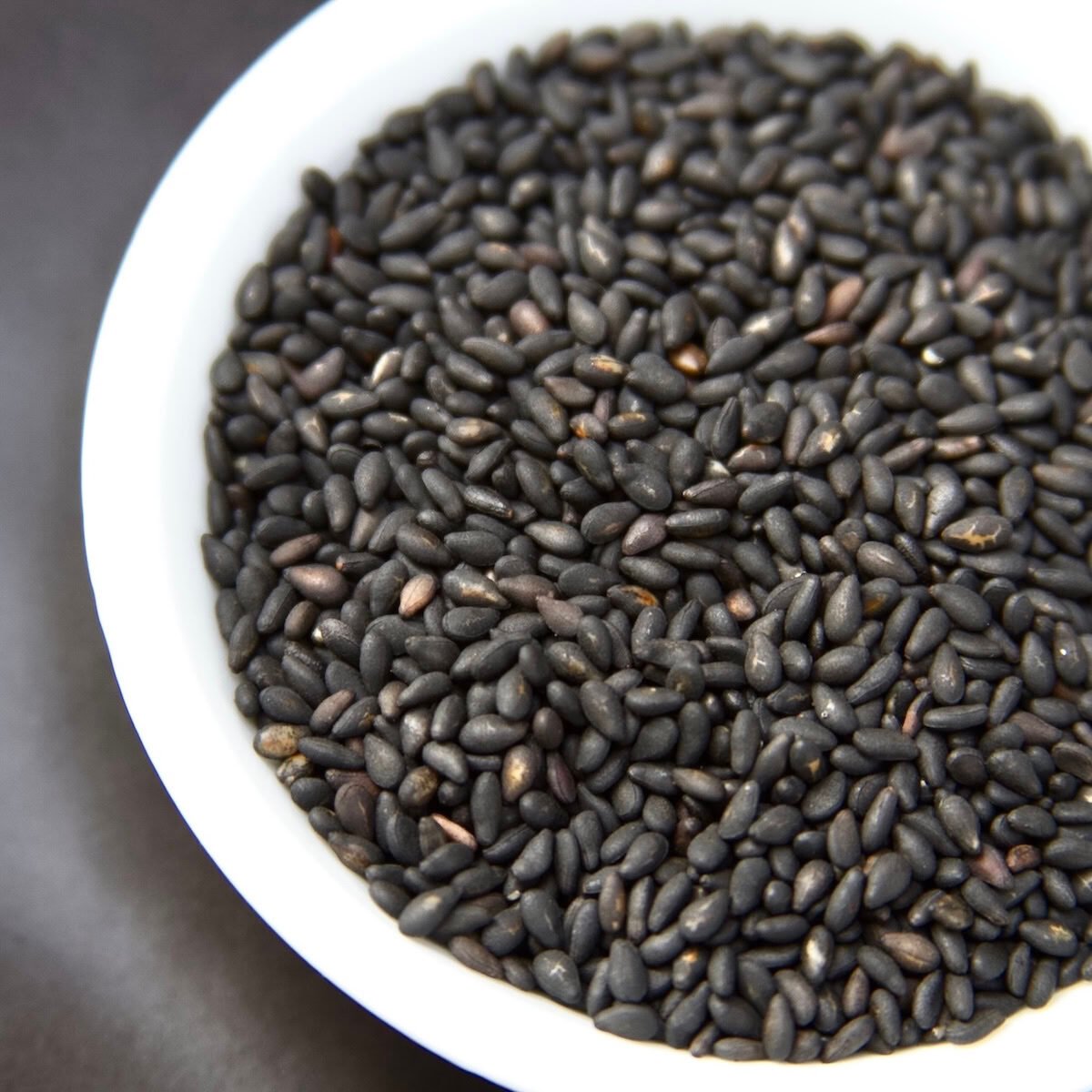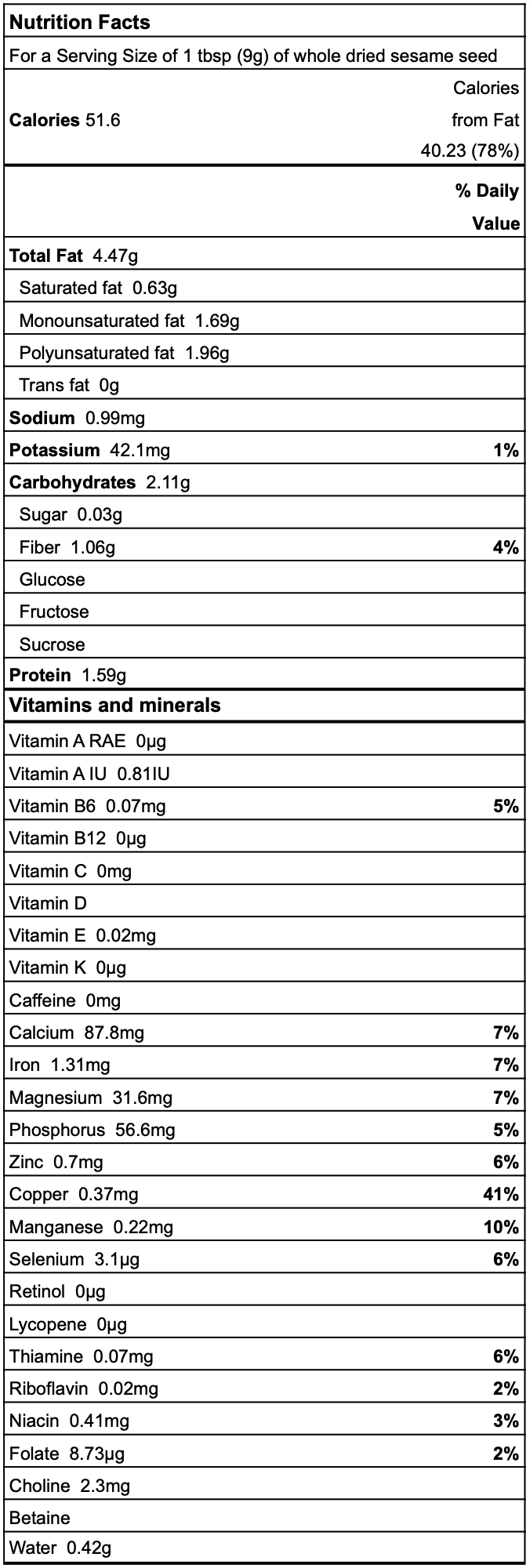Sesame Seed
Sesame seed is the spice produced from the oilseeds of Sesamum indicum, an annual herb in the Pedaliaceae family.

REGION OF ORIGIN
The wild relatives of the Sesamum indicum evolved on the ancient savanna plains of sub-Saharan Africa. They still grow abundantly in Ethiopia today. Through trade, they eventually made it to India, where they were first domesticated into the Sesamum indicum species.
PART & COLOR
Depending on the variety and how they're processed, the small, drop-shaped seeds can come in a variety of colors. The most common are pale and creamy white, but they can also be yellow, red, brown, or black (below). The outer husk of the seed is often removed during processing, leaving the “hulled” white seeds that are so popular for cooking.
HARVEST
Sesame is planted in the late spring. After 4-6 weeks, it starts flowering and the seed pods form. They are ready for harvest in the early autumn when they turn yellowish brown, but they must be cut before they fully ripen to stop them from spitting open and scattering the seeds. They are then dried so the seeds can be extracted in a controlled environment.

FLAVOR & AROMA PROFILE
Sesame seeds have a soft, nutty aroma. It’s akin to toasted almonds or hazelnuts with subtle earthy notes underneath. They taste mildly nutty and buttery.
Toasting sesame seeds gives them much more depth. It makes them nuttier and brings out a rich, smoky, savory quality. They also offer a light crunch, a welcome textural contrast to your other ingredients.
Tahini is another popular way to experience this spice, ever since ancient Mesopotamia. It’s a smooth paste made only by grinding toasted sesame seeds. Its creamy consistency heightens the perception of sesame seeds' rich nuttiness and light bitterness.
CULINARY USES
The versatility of sesame seeds is on display in Asian cuisine. They’re sprinkled over sushi, meats, noodles, and rice. In Japan, they're an essential element of two of the most popular seasoning blends: furikake and shichimi togarashi.
Sesame oil, derived from the seeds, is a critical ingredient in China, Japan, Korea, and Southeast Asia. It’s often added to sauces and dressings or used as a finishing oil for stir-fries.
In Middle Eastern cuisine, sesame mainly takes on its tahini form, which is critical to hummus, baba ghanoush, and halva. Sesame seeds also weave their way through European breads, pastries, and salads. You also can’t deny their efficacy on the bun of an American burger.



